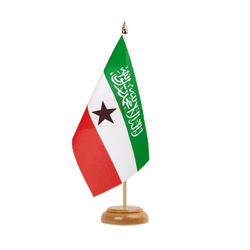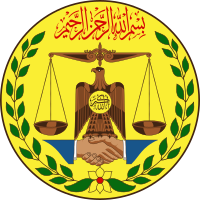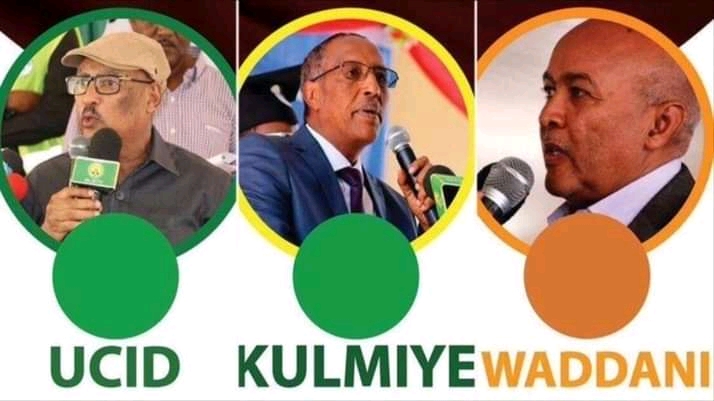Goverment
Chapter 1 - Goverment#
The government of Somaliland comprises legislative, executive, and judicial branches – each of which counterchecks the other but does not have a direct overarching jurisdiction over the other paving the way for a system of check-and-balance.
The legislative comprises a bicameral parliament breaking into the house of elders, ‘Guurti’ or (Upper House of Parliament) and the Lower House which is called the House of Representatives. Each of the two houses has 82 members.
The Guurti was born with the rebirth of the Republic and the restoration of its lost sovereignty in 1991 as an extension of the Elders’ Council that adjudicated social and judicial matters during the emancipation years in Ethiopia in the mid and late-80s.
The first elected members of the House of Representatives took their oath in 2005 following a one-person, one-vote election which decided who was to represent the constituents.
The Executive Branch is headed by a President and a Vice President who are popularly elected on one of three national political parties’ tickets.
His Excellency President Musa Bihi Abdi, elected in late 2017, presently heads the state. H.E. Abdirahman Abdullahi Ismail ‘Zeili’i is the Vice President.
The current government is the fifth in the 29-year history of the Republic and the third elected on the one-person, a one-vote democratic system with each government handing over reins of government to the next, succeeding administration peacefully and without rift or rancor.
Country Name#
Republic of Somaliland (Jamhuuriyadda Somaliland).
Short Form#
Somaliland.
Government type#
Presidential Republic
Demonym#
Somalilander(s).
Capital#
Hargeisa (alternate spelling: Hargeysa).
Major Cities#
Hargeisa, Burao, Borama, Berbera, Las Anod, and Erigavo.
Independence#
Somaliland officially attained its independence from Britain on June 26, 1960.
Restoration of Sovereignty#
The Republic of Somaliland restored its sovereignty on 18 May 1991 withdrawing from the unlawful merger with Somalia. The decision was made by the Grand Conference of Clan Elders held in Burao from 27 April to 15 May 1991. It was later supported by the Somaliland Public after the referendum was held that affirmed Somaliland’s reinstating sovereignty from Somalia as a separate independent sovereign state where 97.1 % voted in favor of the reclaimed sovereignty. 3
Somaliland is Independent Country
Somaliland officially attained its independence from Britain on June 26, 1960.
Public Holidays#
| Tables | Description | Number of Days |
|---|---|---|
| 1 | Eid al Fitri | 2 days |
| 2 | Eid al Adha | 2 days |
| 3 | Maulid un Nabi | 1 day |
| 4 | Muslim New Year | 1 day |
| 5 | Lailatul Isra Wal Mi’raj | 1day |
| 6 | International Labour Day | 1 day |
| 7 | Somaliland Re assertion of independence, 18 May | 2 days |
| 8 | Somaliland 1960 Independence Day | 1 day |
| 9 | Gregorian Calendar New Year, 1 January | 1 day |
Flag description#
The flag of the Republic of Somaliland consists of three horizontal, parallel stripes: green, white and red from top to bottom with the Islamic Shahada inscribed on the green and a black, five-pointed star centred on the white, middle stripe.

National Emblem#
The emblem, set off by a circular yellow background, consists of a coffeecolored falcon sitting below two scales and at the bottom of which are two hands clasped in a handshake. Starting from an intertwined knot at the bottom two, open-ended laurels branch off upwards on either side of the scales and the falcon. The Bismillah in Arabic closes the gap at the top of the laurels and the words Allahu Akbar (Allah is Great) are inscribed on the chest of the falcon.

National Anthem#
The Republic of Somaliland National anthem - ‘ Samo ku waar’ (Live in Eternal Peace) 1 - was composed by the late great playwright and songwriter, Hassan Sheikh Mumin.
Constitution#
The Constitution of the Republic of Somaliland was adopted by the House of Representatives on 30 April 2000. It replaced a National Charter that has served as the principal guiding document since it was passed in 1993 at the Borama conference. Subsequently, the political system of Somaliland has had this transition from clans elected representatives to popular elections. And it was the historic year of 2001, when the national referendum was held, in which 97.% of voters, who turned out in large numbers, not only ratified the national constitution but also reaffirmed the decision for Somaliland to reinstate its sovereign nation-state.
Judicial system#
The National Constitution defines the country’s judicial system as: ‘‘The state [180] shall have a judicial branch whose function is to adjudicate on proceedings between the Government and the public and between the various members of the public (Article 97 (1), which also establishes the Supreme Court, Appellate courts of the regions, regional courts, district courts and the courts of the national armed forces.
Political Parties#
The Republic of Somaliland’s Constitution permits three national political parties which are currently
Kulmiye (ruling party), UCID and WADDANI – the two opposition parties.
